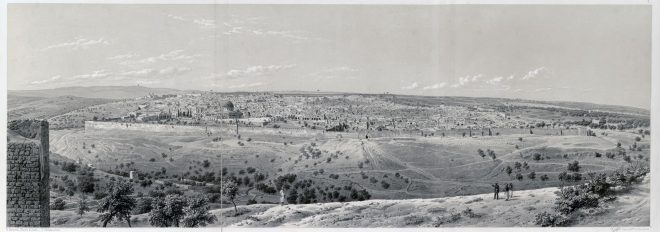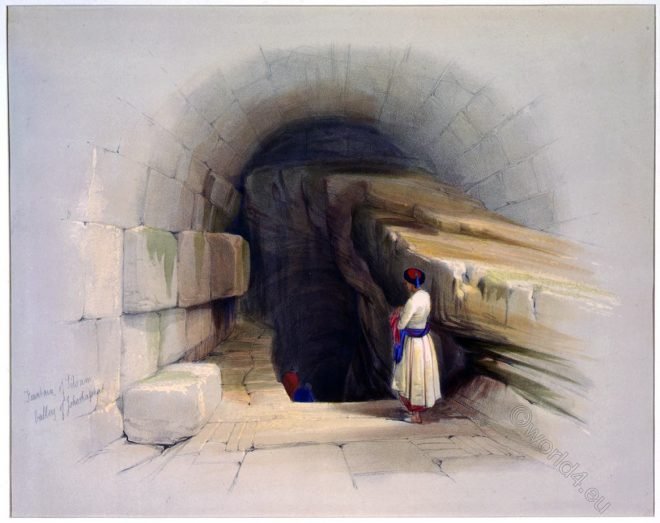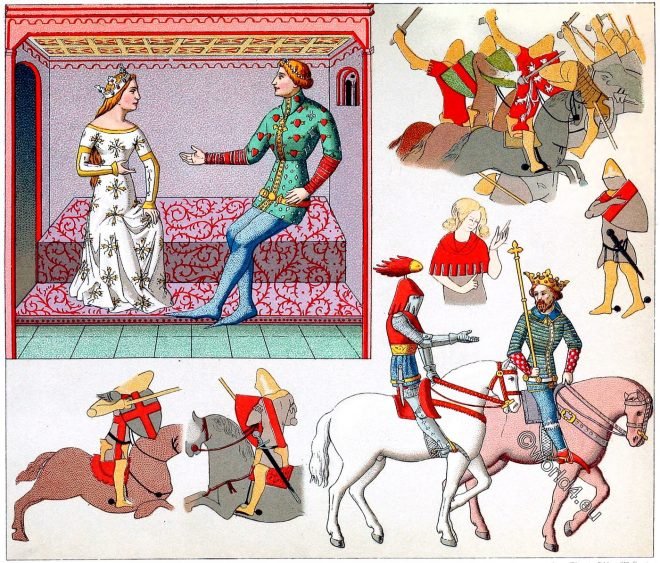Bethany is a locality in Judea, currently part of the West Bank, on the east side of the Mount of Olives, about 2.7 km southeast from Jerusalem, on the road… Read More
Ancient citadel of the Jebusites. Jerusalem Explored.
Ancient citadel of the Jebusites, afterwards that of David, then that of the Pisans. The Jaffa Gate.
Mount Moriah, one of the four hills on which Jerusalem stood.
Mount Moriah is the third of the four hills on which Jerusalem stood in the time of Jesus Christ, according to the description of Josephus.
A Khoisan village on the banks of the Orange River in South Africa.
THE village that appears in this view is at the Orange River, and inhabited a tribe denominated Khoisan, settled on the south bank of that river.
Panorama of Jerusalem, seen from the Mount of Olives.
Jerusalem Explored. Being a description of the ancient and modern city, by Ermete Pierotti, transferred to stone by Thomas Pitken. London 1864
The ancient Jerusalem. Geographical and historical. The Holy Land.
The importance of Jerusalem to Israel and the world is due the fact that it became the seat of the chosen Temple of God.
The Upper Fountain of Siloam. Valley of Jehosophat.
Siloam consists of two basins or fountains, the upper one of which is a fissure in the solid rock. A flight of steps leads down on the inside to the water.
Lower Pool of Siloam, Valley of Jehoshaphat.
Siloam is now used as a public fountain; but it seems to have been once sacred to the uses of the Temple. The Holy Land by David Roberts
Armament. War costumes from the 9th to 13th century in France.
Armament of the Middle Ages in France. Ring armour. Chain mail. War costumes from the 9th to 13th century.
Courtly gallantry. Fashion of the Middle Ages in the 12th and 13th century.
Fashion of the Middle Ages in the 12th and 13th century. Courtly gallantry. Pointed shoes. Knights and armament. Helmets, crest.










